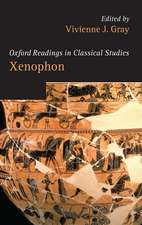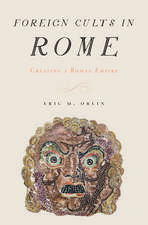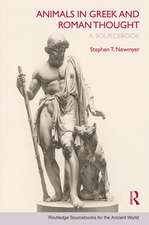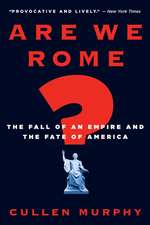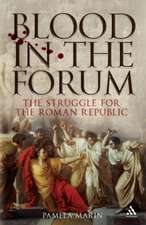The Philosopher's New Clothes: The Theaetetus, the Academy, and Philosophy’s Turn against Fashion
Autor Nickolas Pappasen Limba Engleză Paperback – 22 dec 2017
Toate formatele și edițiile
| Toate formatele și edițiile | Preț | Express |
|---|---|---|
| Paperback (1) | 442.29 lei 6-8 săpt. | |
| Taylor & Francis – 22 dec 2017 | 442.29 lei 6-8 săpt. | |
| Hardback (1) | 1048.50 lei 6-8 săpt. | |
| Taylor & Francis – 26 oct 2015 | 1048.50 lei 6-8 săpt. |
Preț: 442.29 lei
Nou
Puncte Express: 663
Preț estimativ în valută:
84.69€ • 87.27$ • 71.07£
84.69€ • 87.27$ • 71.07£
Carte tipărită la comandă
Livrare economică 21 februarie-07 martie
Preluare comenzi: 021 569.72.76
Specificații
ISBN-13: 9780815372394
ISBN-10: 0815372396
Pagini: 250
Dimensiuni: 156 x 234 x 20 mm
Greutate: 0.36 kg
Ediția:1
Editura: Taylor & Francis
Colecția Routledge
Locul publicării:Oxford, United Kingdom
ISBN-10: 0815372396
Pagini: 250
Dimensiuni: 156 x 234 x 20 mm
Greutate: 0.36 kg
Ediția:1
Editura: Taylor & Francis
Colecția Routledge
Locul publicării:Oxford, United Kingdom
Cuprins
Introduction
What philosophers do
Philosophy for everyone
The philosopher as eccentric
Plato on the normal philosopher
Socratic legacies
How the philosopher appears
Part I. Socrates in the Theaetetus
Chapter 1. Entering the Theaetetus
Plato’s Academy
The Academy in Plato’s Theaetetus
The frame of the Theaetetus
Enter Theaetetus
Socrates as midwife
No place for philosophy
Chapter 2. Being a philosopher teaching philosophy
The cost of entering the Academy
Unwritten teachings
The shoemaker
The Cyrenaics
Pigs and dogheads
School as institution
Conclusion
Chapter 3. Philosophy’s first citizen
Wrestling and civilization
Where the wrestling happens
Two myths of philosophy’s beginning (archê)
Wonder and the rainbow
Iris the teras
Socrates the philosopher
A new myth of philosophy’s archê
Philosopher as headmaster
The philosophical gentleman
Beyond the Theaetetus
Part II. Philosophy Regarding Fashion
Chapter 4. Fashion in philosophy
Fashion thinking
The emperor’s new clothes
Philosophy of fashion today
Imitation according to the tradition
Beau Brummell, beyond imitating
The foreigner
Chapter 5. Anti-fashion
Alternative to fashion
The tradition of anti-fashion
Anti-fashion today
The suit
Denim jeans
Body art
Black
Black and the body
Chapter 6. Fashion in antiquity
The threat of anachronism. Ancient fashion?
Diversity and contingency in dress
Change in dress
Justification for change in dress
Plato’s Republic
“Better”
Part III. The Philosopher’s New Clothes
Chapter 7. There is no outfit like Greek nudity
Nudity in modern Europe
Nudity for non-Greeks
Recent treatments of Greek nudity
Pausanias
Inspection, sexual and otherwise
Chaste nudity
Ritual nudity
Ritual nudity and athletics
Civic nudity
Theatetus
Chapter 8. You can tell a philosopher
The Cynic display of withdrawal
The limits of philosophical costume
Platonic philosophical nudity
Platonic anti-fashion
Thoreau
Kierkegaard
What philosophers do
Philosophy for everyone
The philosopher as eccentric
Plato on the normal philosopher
Socratic legacies
How the philosopher appears
Part I. Socrates in the Theaetetus
Chapter 1. Entering the Theaetetus
Plato’s Academy
The Academy in Plato’s Theaetetus
The frame of the Theaetetus
Enter Theaetetus
Socrates as midwife
No place for philosophy
Chapter 2. Being a philosopher teaching philosophy
The cost of entering the Academy
Unwritten teachings
The shoemaker
The Cyrenaics
Pigs and dogheads
School as institution
Conclusion
Chapter 3. Philosophy’s first citizen
Wrestling and civilization
Where the wrestling happens
Two myths of philosophy’s beginning (archê)
Wonder and the rainbow
Iris the teras
Socrates the philosopher
A new myth of philosophy’s archê
Philosopher as headmaster
The philosophical gentleman
Beyond the Theaetetus
Part II. Philosophy Regarding Fashion
Chapter 4. Fashion in philosophy
Fashion thinking
The emperor’s new clothes
Philosophy of fashion today
Imitation according to the tradition
Beau Brummell, beyond imitating
The foreigner
Chapter 5. Anti-fashion
Alternative to fashion
The tradition of anti-fashion
Anti-fashion today
The suit
Denim jeans
Body art
Black
Black and the body
Chapter 6. Fashion in antiquity
The threat of anachronism. Ancient fashion?
Diversity and contingency in dress
Change in dress
Justification for change in dress
Plato’s Republic
“Better”
Part III. The Philosopher’s New Clothes
Chapter 7. There is no outfit like Greek nudity
Nudity in modern Europe
Nudity for non-Greeks
Recent treatments of Greek nudity
Pausanias
Inspection, sexual and otherwise
Chaste nudity
Ritual nudity
Ritual nudity and athletics
Civic nudity
Theatetus
Chapter 8. You can tell a philosopher
The Cynic display of withdrawal
The limits of philosophical costume
Platonic philosophical nudity
Platonic anti-fashion
Thoreau
Kierkegaard
Recenzii
"Although it may at first appears to be impossible to discuss both Plato’s thought and the philosophy of fashion in a coherent and philosophically promising way, Pappas’ book shows that it is a feasible and challenging task ... Pappas reveals a polished expertise on fashion in philosophy and the history of anti-fashion, as well as on some peculiar fashion and anti-fashion articles of clothing, like men’s suits, denim jeans, and black clothes. Reading these pages, with their many references to contemporary media, historic style icons (in particular, Beau Brummell) and philosophers who have theorized about fashion and its social and cultural effects, is pleasant and very informative ... Like Socrates, Nickolas Pappas’ book is somehow atopos, yet able to stimulate reflections and debates. More than anything else, The Philosopher’s New Clothes is a very original book, one of a kind in Platonic studies."
- Filippo Forcignanò, Università degli Studi di Milano, Italy, Bryn Mawr Classical Review (2018)
"In Nickolas Pappas’ book, The Philosopher’s New Clothes: The Theaetetus, the Academy, and Philosophy’s Turn Against Fashion, one finds a wonderfully unexpected and oddly appropriate connection between the emergence of the Academy as a place in which the philosopher appears wearing that title, ‘philosopher’, and philosophy’s turn against fashion. While historians date the beginning of fashion to around 1300, and a second movement to 1850, Pappas argues that something recognizable as fashion and its antithesis already existed in Greek and Roman antiquity ... Pappas’ book ends on the shrewd and invaluable note that, even while it paves the way for a brood of philosopher-fashionistas, the Academy arises both then and now as the place where such fashions will nonetheless be able to be critiqued—a risky business, to be sure, but perhaps less risky naked in the gym than before a jury of suits. The tension persists, but so too the belief in philosophy’s beginning."
- Gwenda-lin Grewal, The New School for Social Research, USA, ANCIENT PHILOSOPHY 41 (1): 232-236 (2021).
- Filippo Forcignanò, Università degli Studi di Milano, Italy, Bryn Mawr Classical Review (2018)
"In Nickolas Pappas’ book, The Philosopher’s New Clothes: The Theaetetus, the Academy, and Philosophy’s Turn Against Fashion, one finds a wonderfully unexpected and oddly appropriate connection between the emergence of the Academy as a place in which the philosopher appears wearing that title, ‘philosopher’, and philosophy’s turn against fashion. While historians date the beginning of fashion to around 1300, and a second movement to 1850, Pappas argues that something recognizable as fashion and its antithesis already existed in Greek and Roman antiquity ... Pappas’ book ends on the shrewd and invaluable note that, even while it paves the way for a brood of philosopher-fashionistas, the Academy arises both then and now as the place where such fashions will nonetheless be able to be critiqued—a risky business, to be sure, but perhaps less risky naked in the gym than before a jury of suits. The tension persists, but so too the belief in philosophy’s beginning."
- Gwenda-lin Grewal, The New School for Social Research, USA, ANCIENT PHILOSOPHY 41 (1): 232-236 (2021).
Descriere
This book discusses modern philosophical treatments of fashion, and of "anti-fashion". Pappas argues that the fashion/anti-fashion debate applies to antiquity, that nudity at the gymnasia was an anti-fashion. Thus anti-fashion provides a way of viewing ancient philosophy’s orientation toward a social world in which philosophy also has to live.


